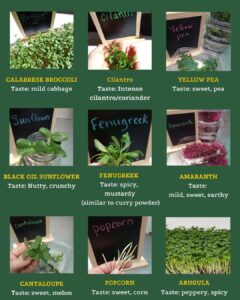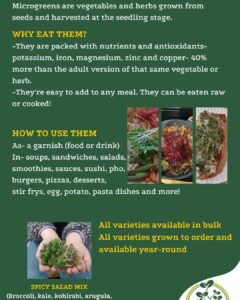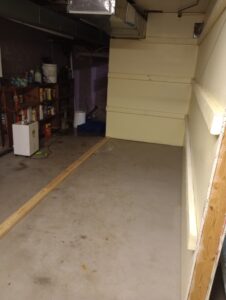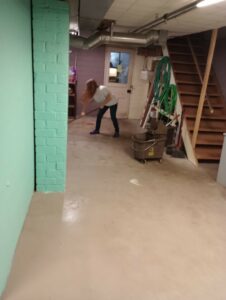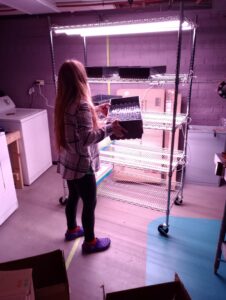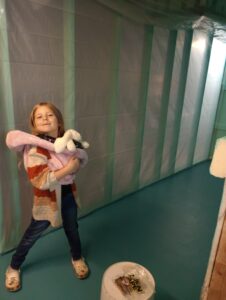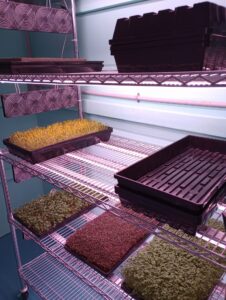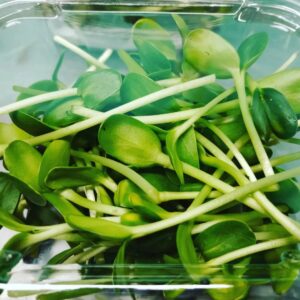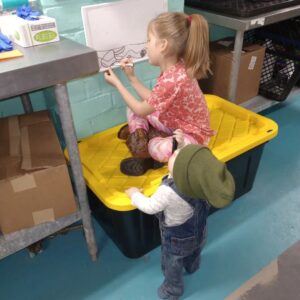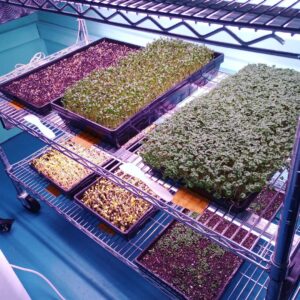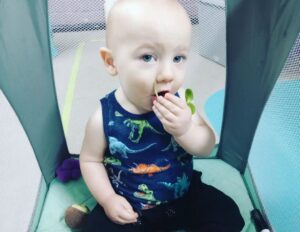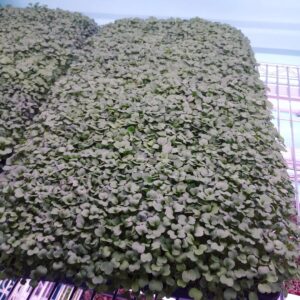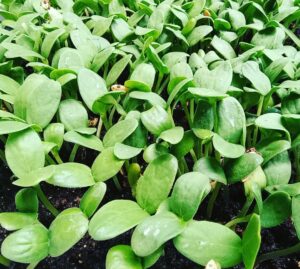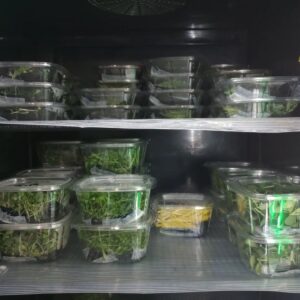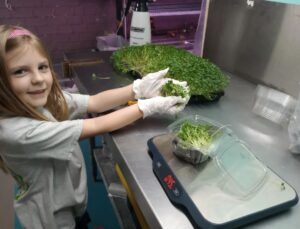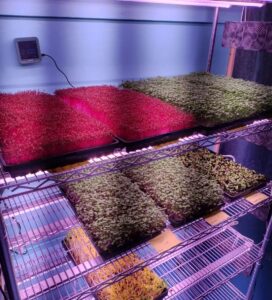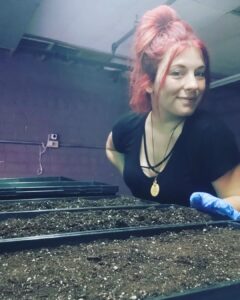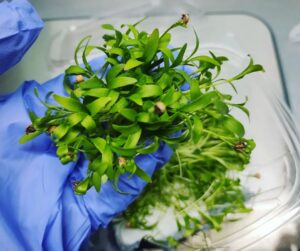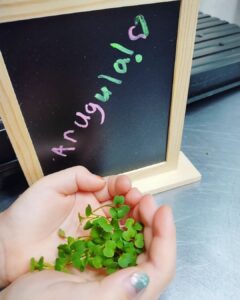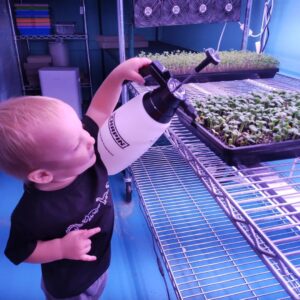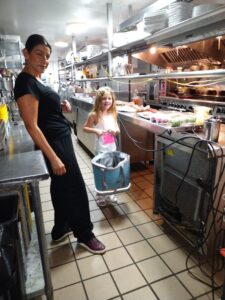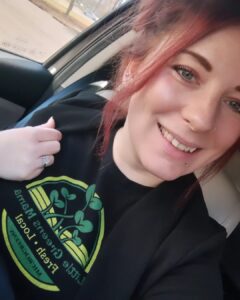Final report for FNC22-1346
Project Information
The Food Incubation Center (FIC) is an integral part of the work that we do at Stark Fresh Food and in Stark County Ohio. The FIC is one of the many private operations and organizational initiatives supported by our Food Justice Campus, but we know that creating opportunities to start a food business is not enough. The Food Incubation Center (FIC) erases barriers toward business ownership by offering access to its physical assets and providing guidance and training, primarily through three core functions: training, business incubation, and a shared use commercial kitchen.
This past year has been one of prepping the farmer and the space to be able to start growing.
In Canton Ohio, 32% poverty rates are a reality. Those seeking employment to be able to afford food pull themselves out of poverty, are few and far between, especially without a college education or with a criminal record of some sort. StarkFresh operates a Food Justice Campus, located within downtown Canton, OH in a 100-yr-old building. The Food Incubation Center, housed within the Campus helps erase barriers towards business ownership, by taking physical assets (affordable office space and a shared, licensed commercial kitchen)and pairs them with personalized guidance & training mainly with our Business Development Boot Camp. We've created space in the Campus basement for a microgreen growing operation. There aren't any microgreen farms locally designed to create employment opportunities for low-income individuals who are seeking a way to earn a living. Locally, the demand seems to be growing for quality microgreen offerings. By growing in an otherwise unusable interior space, we are able to better use resources ¬ have to take up potentially valuable land for other agricultural crops. Through the creation of this pilot microgreen farm, we hope to create an example of how a different approach to food and employment can create a meaningful way out of poverty.
1. Prep and equip the basement at the Food Justice Campus to be a suitable space for microgreen cultivation.
2. Test different growing mediums using different base materials, growing styles, and growing vessels.
3. Take an unskilled, low-income individual and teach them how to cultivate microgreens.
4. Increase microgreen sales to local restaurants, retail stores.
5. Document the entire process to be able to duplicate at a later date, at a different location, with different individuals.
Research
Much time has been spent researching the best way to grow in the environment and space that we are attempting this in. Limitations to operating in a basement have us choosing the best way to grow.
When it comes to microgreens, there are several established methods and materials used in commercial growing. For our setup, we chose 1020 trays as they were the most standard and fit our space requirements. The decision to grow in actual soil was another one that was made for several reasons, but mainly as we have an incredible local source of composted soil made from commercial food scraps, so it is full of beneficial nutrients. We also have a farm space to compost the contents of the spent trays. For that reason, the growing medium is the Sprout mix from Tilth Soil. We chose to purchase most of the growing trays and rack fans from Bootstrap Farmer but found some inexpensive LED lighting on Amazon. As we are trying to maintain humidity levels and temperature in a basement space, we also purchased smart equipment that could be monitored and controlled using a phone app. We purchased from Amazon a smart humidifier, smart hygrometer and room temp monitor, thermometers, smart space heater, smart humidifier, and air conditioner. The grow rack fans also came from Bootstrap Farmer. Racking was purchased from WebstaurantStore.
A clear shower curtain and hardware were bought on Amazon to maintain moisture levels inside the grow space. Stainless tabletops, sinks, and other equipment were purchased from a local auction house specializing in selling used restaurant kitchen equipment. Finally, we found that concrete landscaping blocks from Menards work well for the first growing stages to be able to hold tops down over the crops being deprived of light.
Components were added as needed. Initially, we were hoping that the racks, lights, and grow fans would be enough, but when crops weren't growing as well as they should have, we added the temperature and humidity monitors to assess what was going on. From there, we added the humidifier, which worked well until the summer hit and the basement got slightly warmer. We had to add an air conditioner, dehumidifier and heater to fully regulate the growing conditions. Once we were able to work through these variables, crop yield has been consistent and can be ramped up or down depending on the demand.
Educational & Outreach Activities
Participation Summary:
With the farm located within a building operated by a nonprofit, the outreach happens quite frequently in terms of giving impromptu hands-on demonstrations, while work is being done in the farm. On a monthly basis, there are numerous farm tours with individuals, funders, agency partners, and volunteer groups. This has led to her farm being featured in an online blog and speaking requests from OEFFA at their national conference.
Learning Outcomes
From a logistical standpoint, the biggest lesson we learned was how hard it is to maintain the constant growing conditions needed to have consistent crop yields. We also underestimated the frequency the farmer would need in their farm space, especially to keep the crops adequately watered. The biggest thing that we could not have anticipated was how life-changing of an experience this would be for the farmer. The goal of the project was to take someone who had no growing experience, and no business background and help them create a viable business to help them generate income for themselves and their family. In this case, not only has that happened, but the farmer was a single mother who was looking for an income stream that she could include her children in all aspects of her business. Having the physical location for this farm with the 24/7 access needed to successfully operate this farm was a crucial component, as was readily accessible water and electrical.
Project Outcomes
Retrofitting into an existing space is always a bit of trial and error. What looks good on paper doesn't always translate well into a real-world application. That being said, we've done a good job of keeping to the spirit of what was originally intended for this space, albeit it has taken much longer than intended. Finding the right person to farm the space, and then empowering her to be able to get most of the work done herself also took longer than intended. We put her through our business development boot camp and she is working on finishing up her business plan as part of this project. Construction of the site is nearly complete and she hopes to begin growing within the next month or so.
So much has changed in the last 10 months! At the last update, we were still building out the space for the Microgreen farm, and the farmer/business owner was still working on her business plan. Since then, she has established her own LLC, opened a business bank account, began growing and advertising and is successfully growing crops and selling them to wholesale and retail customers throughout the area.
